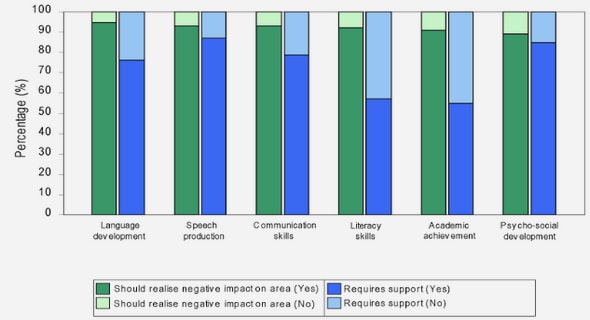(Downloads - 0)
For more info about our services contact : help@bestpfe.com
Table of contents
PART I : GENERAL INTRODUCTION
A – WINTER ANTARCTIC ENVIRONMENT
1. Antarctica and study sites
2. Circulation and water masses
3. Sea-ice environment
B – SEA-ICE DEPENDENT PELAGIC ECOSYSTEM
1. Sea-ice community
2. Upper trophic levels depending on sea-ice habitat
2.1 The Antarctic continental shelf assemblages
2.2. The Antarctic shelf-break assemblages
C – STUDYING THE FORAGING ECOLOGY OF TOP PREDATORS
1. Foraging in a heterogeneous environment
2. Detection of foraging behaviour
2.1 Inferring foraging activity from tracking data
2.2 Direct measurements of foraging success
2.3 Inferring foraging activity from diving behaviour
3. Habitat use of top predators
D – THE WEDDELL SEAL
E – CONTEXT, OBJECTIVES AND THESIS OUTLINE
PART II : METHODOLOGICAL DEVELOPMENTS
A – INTRODUCTION
B – PAPER 2
1. Abstract
2. Introduction
3. Materials and methods
3.1 Tagging procedure
3.2 Fine scale analysis of foraging behaviour
4. Results
4.1 General diving behaviour
4.2 Foraging behaviour
5. Discussion
5.1 Detection of intensive foraging activity within dives
5.2 Fine scale foraging strategy of Weddell and southern elephant seal
6. Conclusion
7. Acknowledgements
8. Appendix
C – PAPER 3
1. Abstract
2. Introduction
3. Material and Methods
3.1 Fine scale analysis of foraging behaviour
3.2 From high-resolution to low-resolution dive datasets
4. Results
4.1 General diving behaviour
4.2 From high-resolution to low-resolution dives: estimation of foraging effort
5. Discussion
5.1 Foraging effort in low-resolution dives
5.2 Ecological applications
6. Conclusion
7. Aknowledgements
8. Appendix
D – CONCLUSION
PART III : WEDDELL SEALS HABITAT USE DURING
ANTARCTIC WINTER
A – INTRODUCTION
B – PAPER 4
1. Abstract
2. Introduction
3. Materiel and methods
3.1 Animal handling and tagging
3.2 Data collected from the tags
3.3 Argos Kalman filtering
3.4 Bathymetry and sea-ice data
3.5 Hydrological data
3.6 Behavioural data
2.7 Statistical analysis
4. Results
4.1 Tag performance, foraging areas and diving features of Weddell seals in winter
4.2 Use of hydrographic environment
4.3 Influence of environmental and temporal factors on foraging behaviour
4.3.3 Bottom time residuals
5. Discussion
5.1 Effect of winter advancement and circadian light cycle on diving patterns
5.2 Habitat selection and influence of the environment on foraging behaviour
5.3 Future studies
6. Conclusion
7. Ackowledgement
8. Appendix
C – PAPER 5
1. Abstract
2. Introduction
3. Material and methods
3.1 Instrumentation
3.2 Argos locations filtering and track simulations
3.3. Environmental data
3.4 Diving behaviour
3.5. Movement pattern analyses
3.6 Statistical analysis
4. Results
4.1 Tag performance
4.2 Movement patterns
4.3 Diving behaviour
4.4 Identification of Area-restricted search
4.5 Area-restricted search behaviour
5. Discussion
5.1 Methodological discussion
5.2 Foraging strategies of the focal Weddell seals
5.3 Habitat use
6. Conclusion
7. Acknowledgements
8. Appendix
D – CONCLUSION
PART IV: GENERAL DISCUSSION, CONCLUSIONS AND PERSPECTIVES
A – METHODOLOGICAL DISCUSSION
1. Analysis of diving behaviour to infer foraging activity
1.1 The development of a new method
1.2 Detection and prediction of foraging success
2. Track analysis and implementation of the foraging effort index
B – ECOLOGY OF THE WEDDELL SEAL DURING WINTER
1. Context
2. The fast-ice: a primary habitat for Weddell seals
2.1 Movement patterns of Weddell seals during winter
2.2 Overwintering in fast-ice allows predator and inter-specific competition avoidance
2.3 Assessment of important sea-ice features to Weddell seals
3. Foraging strategies of Weddell seals
3.1 Optimal foraging from a breathing hole
3.2 Inference on Weddell seals’ diet from diving behaviour
3.3. Weddell seals’ adaptation to winter conditions
3.4 Environmental parameters influencing the behaviour of Weddell seals
C – CONCLUSION AND PERSPECTIVES
1. Main conclusions
2. Climate change and Weddell seals
2.1 Observed changes in Antarctic sea-ice
2.2 Assessment of potential climate change effects on Weddell seals
3. Perspectives
3.1 Information on prey: the missing link between top predators and their environment
3.2 Improving our understanding of climate variability effects on Weddell seals
REFERENCES


